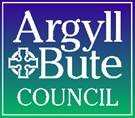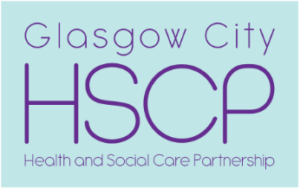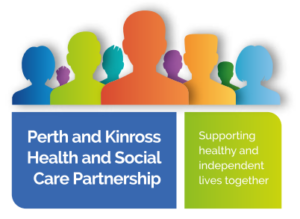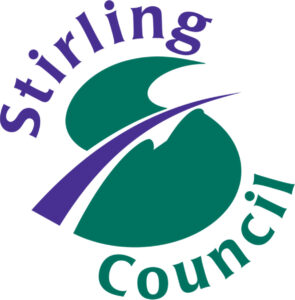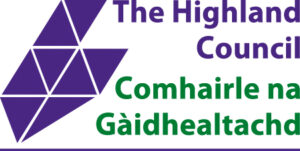Submission from Social Work Scotland to the Scottish Sentencing Council consultation on sentencing young people
21.08.2020
Social Work Scotland is the professional body for social work leaders and managers, working closely with partners in all sectors to shape policy and practice, with a view to continuously improving the quality and experience of social services in Scotland. We welcome this opportunity to comment on the proposed sentencing guidelines for young people.
Q1. Do you agree or disagree that a principle-based approach to the guideline is the right approach?
Agree. For the reasons set out in the consultation paper. The value of a sentencing guideline for young people is the opportunity it presents to emphasise the relevant developmental and contextual factors which should be taken into account when sentences are considered. Those developmental and contextual factors apply in all circumstances, regardless of the type of offence, so it makes sense to utilise a principle-based approach.
Q2. Do you agree or disagree that the guideline should apply to people under the age of 25?
Agree. If there was an option, our response would be ‘strongly agree’. The consultation paper summarises well the breadth and weight of evidence in support of an expansive definition of ‘young person’, including all those under the age of 25. Scotland’s criminal justice system must reflect the best available evidence about why people commit offences, and what measures are effective in deterring such behaviour in the future. If our central objective remains securing justice for victims through appropriate sentencing, we are failing victims, the individuals involved in offending and society at large, if we demand ineffective measures of punishment (which for most children and young people includes incarceration).
The age of 25 is also consistent with Scottish law for children in care, which recognises the evolving capacity of young people, and their continued need for assistance and supportive relationships well into adulthood.
Indeed we hope that future guidelines will make clear that for everyone, capacity is an evolving, unfixed thing, determined by a range of factors. Although we can accept that an age bracket be applied in this instance, our hope is that this ‘threshold’ will not actually mean much, as in all instances courts will give detailed and careful consideration to an individual’s capacity, regardless of their age. Specific guidelines for young people are welcome in that they will cement such considerations into practice for cases involving under 25 year olds, but such practice should be standard in all cases.
We can also accept the restriction of the guidelines to those individuals who are young at the time of sentencing, for the reasons given in the consultation paper. However, this detail underlines the importance – albeit outwith the Scottish Sentencing Council’s purview – of ensuring the process from charge to trial is swift and efficient. It would be palpably unfair (and potential open to appeal) for an individual to potentially receive, for the same offence, materially different kinds of sentence at two different points in time, determined purely on the basis of whether the individual is considered a ‘young person’ or ‘adult’ at the time of sentencing.
Q3. If you disagree that the guideline should apply to people under the age of 25, at what age should the guideline cease to apply?
N/A
Q4. Do you agree or disagree that the relationship between this guideline and the ‘Principles and purposes of sentencing’ guideline is set out clearly?
Agree. The proposal to make direct links between the two documents, allowing this guideline to be kept brief, seems sensible.
Q5. Do you agree or disagree that paragraph 7 of the guideline gives enough information about the factors that should be taken into account when sentencing a young person?
Disagree. While we welcome the Sentencing Council’s efforts to keep the guidelines brief and concise, we feel an opportunity may be missed (perhaps in the form of an annex or appendix) to set out, in more detail, the types of factors which should be taken into account. For example, the guideline could highlight the higher incidence of mental health issues among young people involved in offending, or the impact of abuse, neglect and loss. There is no explicit mention of the relevance of care experience, and perhaps more importantly, how this should be considered.
Ideally the proposed level of information in the guideline would be sufficient, prompting further inquiry and investigation into the evidence underpinning it. However, remaining aware of the pressures judges are under, a guideline which itself provides a clear introduction to these factors may be necessary.
For comparison, the ‘Welfare’ section of the Sentencing Council’s Sentencing Children and Young People Guidelineprovides significantly more detail on the factors which the court should consider when determining a sentence.
Q6. If you do not agree that paragraph 7 of the guideline gives enough information about the factors that should be taken into account when sentencing a young person, what additional information should it provide?
Provided answer in response to question 5.
Q7. Do you agree or disagree that rehabilitation should be given greater emphasis than other purposes of sentencing in this guideline?
Agree. Rehabilitation is rightly described as the primary consideration, and we welcome the fact that the guideline clearly frames the purpose of sentencing as the identification of a disposal most likely to reduce the risk of reoffending. As the evidence summarised in the consultation paper suggests, this should encourage decisions which seek to address the young person’s needs, rather than punish their actions.
Q8. Do you agree or disagree that rehabilitation should be a primary consideration when sentencing a young person?
Agree. Reasons given in response to question 7.
Q9. Which, if any, other purposes of sentencing should be emphasised in this guideline?
In light of the fact that 50% of respondents thought that protecting the public was the most important purpose of sentencing in general, it may be worthwhile to include a paragraph in the guideline explaining how a focus on effective rehabilitation of young people contributes to public safety, through reductions in recidivism, reduced inequality, etc.
Q10. Is the section on the assessment of seriousness helpful?
Disagree. A section on assessing seriousness is necessary and has the potential to be very helpful in securing the objectives of this guideline, however the current two paragraphs provide little information on why a young person’s maturity will be generally lower than that of an older person. This being a guideline covering individuals widely considered ‘adults’ by society, it is important that relevant opportunities are taken (in the guideline) to explain about an individual’s ‘evolving capacity’, and the now scientifically evidenced distinctions between young adult’s neurobiology and that of older adults.
Although it is acknowledged that readers are encouraged to read the guideline ‘The Sentencing Process’ (para 11), the ‘assessment of seriousness’ section’s utility may be improved by providing a few additional paragraphs on the factors which should be considered when assessing culpability, as well as providing some indication of how maturity should be determined by the court. In respect of the latter process, in our opinion this would be difficult through a court process alone, and will likely depend on external, expert assessments, provided to the judge via reports, etc.
Q11. Do you agree or disagree that paragraph 13 of the guideline identifies the information which is of most relevance to sentencing a young person?
Disagree. As the guideline itself says, the four bullet points of paragraph 13 are provided ‘for example’, and should not be considered the totality of relevant information. Each young person is unique, and the guideline should stress that a judge should seek to secure whatever contextual and background information they require in order to identify an appropriate sentence (the primary purpose of which is rehabilitation).
With the existing bullet points, we would also recommend some re-working. Our suggestions below:
The physical and mental health of the young person, including addictions,
disabilities, etc.
- Accommodation issues
- Childhood background, including care history (if the young person is or was ‘looked after’), prior professional involvement with the family, etc.
- Whether any proposed sentence is likely to be effectively implemented, and what
steps can be taken to increase the likelihood of effective implementation.
Q12. Do you agree or disagree with paragraph 14 of the guideline stating that cases should be referred to a children’s hearing for advice where it is competent to do so?
Agree.
Q13. Do you agree or disagree with the proposed features of an appropriate sentence for a young person set out in paragraph 15 of the guideline?
Agree. However, would recommend some re-ordering and re-wording, to help achieve the guidelines objectives. The ordering and wording of lists such as this play a significant part in ‘framing’ people and issues in reader’s minds, and so it is important careful attention is given to the impression such a list gives.
For example, starting with ‘Increase the likelihood of aiding the reintegration of the young person into society’ suggests to the reader that the individual concerned is not integrated into society, and is therefore somehow ‘apart from it’. This is not a helpful framing to place around young people who offend, many of whom may be firmly part of their society /community. A judges’ consideration of what is an appropriate sentence may differ for someone they feel is part of society, and for someone who sits ‘outside’ of society.
Similarly, the last bullet point, ‘Assist in developing or maintaining positive connections between the young person and society’, again implies that the young person is somehow separate to the society of which they are part. Some careful rewording could convey the message without inadvertently suggesting things about the young person / young people. We would recommend placing ‘Address the underlying causes of offending behaviour’ as the first bullet point, as from the perspective of rehabilitation being the primary purpose of sentencing, this feature seems of primary importance.
In respect of paragraph 16, the guideline states that the judge should clearly explain the sentence of the young person, to increase the likelihood of the sentence being effective. However, the clarity of the explanation is not, in itself, what is going to make a difference. Rather it is the quality of the young person’s understanding. Therefore we would recommend amending this paragraph so that it encourages judges to make sure the young person has clearly understood the reasons for, and the aims of, of the sentence. Depending on the individual’s maturity and communication needs, that may require external (to the judge / court) support.
Q14. Do you agree or disagree that the approach set out in paragraphs 17 and 18 of the guideline is appropriate?
Agree.
Q15. Do you agree or disagree that judges should consider remitting each case to a children’s hearing for disposal, where it is competent to do so?
Agree. Judges should give this option consideration, where it is competent to do so, helping to ensure that young people’s actions and needs are considered through a welfare lens, with suitably tailored responses / interventions.
Q16. Do you think the guideline will influence sentencing practice in Scotland?
We welcome the introduction of the guideline (and accompanying guidelines), representing as it does, in our view, an important component in the broad effort to ensure the best available evidence and knowledge underpins our justice system. Although we appreciate the document is only a guideline, it provides those operating within and alongside the justice system with clarity about how (and on what basis) the system should operate. Not only should it encourage deeper engagement with the evidence about young people’s offending and rehabilitation, it should also, helpfully, provide for greater consistency and a constructive framing around judges’ decision making.
In assessing whether the guideline has influenced sentencing practice, we encourage the Sentencing Council to consider a formal evaluation, perhaps combining data already collected by the Scottish Courts and Tribunal Service (on disposals, etc.) with some qualitative element capturing the experiences of young people involved in sentencing.
Q17. Do you agree or disagree that the guideline will increase public understanding of how sentencing decisions in respect of young people are made?
Agree that the guideline has the potential to increase public understanding. In itself the guideline does not provide much information to the casual reader, but with some modifications (such as those recommended in our previous answers) and clear links through to the underlying evidence base, it could make a really valuable contribution.
Considering the public’s interest in offending by children and young people, the guideline is certainly likely to illicit some attention and public debate. We hope that such an opportunity to improve public understanding is not missed.
Q18. Do you agree or disagree that the guideline will increase public confidence in the sentencing of young people?
Do not know. We suspect that in some parts of society the guideline is likely to diminish public confidence in sentencing of young people; particularly with the definition of young people extending to 25 years old. In the view of some in the public, crime should be met by punishment, and a focus on rehabilitation is to pander to offenders and disregard victims.
Often this narrative extends to children and young people, about whom it is argued that, if they are hold enough to commit certain crimes, they are old enough to take responsibility for them (by which they mean adult, custodial sentences). However, while public confidence in the justice system (and sentencing as a key part of that) is absolutely critical, the role of the Scottish Sentencing Council is to support judges to make the best decisions with a view to securing justice. That involves marshalling evidence which shows that ‘punishment’ (often crudely associated with custodial sentences) is often ineffective in changing behaviour, reducing public risk, etc. Other parts of the public, focused on a securing a justice system which reduces crime and increases public safety, will welcome an evidence
based guideline, and will likely have increased confidence in the sentencing of young people.
Q19. Do you agree or disagree with the assessment of the specific, identified impacts
the guideline is expected to have?
Disagree. The impact assessment, understandably, focuses on the impacts within the justice system. There are mentions of the impact on social work, but the conclusion is always that these will be minimal. We have welcomed engagement by the Scottish Sentencing Council to date, seeking to understand the likely impact on social work, but do not feel this has gone far enough to properly articulate the issues local authorities and others may face. For example, in respect to paragraph 50 of the assessment, it states that:
It should be noted that this may require a movement of resources from criminal justice social work departments to children and families’ social work departments. We anticipate this impact will be spread across local authorities and will not be a significant impact compared to the absolute number of cases dealt with by social work departments.
However, local authority resourcing of social work is not as simple as this implies. Justice Social Work funding is, to a significant degree, provided by Scottish Government and ring-fenced for specific purposes. While some local authorities do augment this allocation, not all do. And ring-fenced funding cannot simply moved around between departments.
Similarly, while we agree that a relatively small percentage increase in compulsory supervision orders is unlikely to provoke any long-term structural issues (as noted in paragraph 51 of the impact assessment), the fact of short term resource impact should not be summarily skipped over. Children and families social work, like all social work, is under significant resource pressures, with services being reduced and capacity constrained. At the same time, expectations (particularly through recent legislative measures) are increasing the demand on social work team s in general, and on social workers’ time specifically.
These issues apply equally to paragraph 58 of the impact statement, where it notes that “social work departments may incur additional costs over the short term if the information requested by courts is expanded to include an assessment of maturity”. Our hope and expectation is that, in implementing this guideline, courts will have to request more input from social work. This would be welcome, in the interests of providing the judge with a broad assessment of maturity and therefore culpability. But there will still be an impact, and while after a few years the system will have realigned itself in order to accommodate the demand, over those initial years there will be work in addition to (rather than instead of) current activity. Individuals and teams will either have to absorb this, or other activity will have to be reduced. In planning for the introduction of the guideline, stakeholders should try to better identify the likely impact, and put in place measures to facilitate the transition over the next few years.
But perhaps most significantly, and missing entirely in the impact assessment, is consideration of the additional costs to the system of managing non-custodial disposals for young people with very serious care needs. Such disposals will, in the majority of cases, be the more effective option (in terms of securing rehabilitation), but only if the wider system has the capacity / resources to meet those needs. The care and risk management of young people who may have caused serious harm, but who are simultaneously at risk of harm to themselves and from others, requires teams of highly skilled professionals, working in integrated teams. As the principles underpinning such an approach are better aligned to the available evidence, and the outcomes from it (in respect of recidivism, etc.) superior to
custodial sentences, such teams are better value for money than prisons. But it does not simply equate that the capacity is sitting ready to accommodate the potential increase in work. The Scottish court system should seek confidence that the wider public sector, responsible for implementing its disposals, is equipped to do so. (For further information in this area we recommend discussions the University of Strathclyde’s Centre for Youth and Criminal Justice, and with the Kibble team managing the Interventions for Vulnerable Youth (IVY) project.)
We appreciate these issues are not in the purview of the Sentencing Council directly, but the impact statement should still attempt to quantify or illustrate the expected impact on key related services like social work. That work will help facilitate discussions among relevant other parties, such as Scottish Government and local authorities.
Q20. What benefits do you think will come from the introduction of this guideline, if any?
Primarily, the broadening out and cementing of current judicial best practice, with full and proper consideration given to the young person’s background, context, characteristics and needs when determining sentences. This is likely to require the increased involvement of a range of professionals in the work of the court, providing assessments and expertise.
Q21. What costs (financial or otherwise) do you think will come from the introduction of this guideline, if any?
As noted in our answer to question 19, we believe the impact assessment has underestimated the costs involved. In too many instances, in the absence of hard data, the likely financial and human impact is marginalised as ‘short-term’. This should be readdressed, with a deeper examination of impact undertaken.
However, we reassert our opinion that the additional costs so far identified are welcome, in so much as they represent a move in our justice system towards a more evidence-based, welfare-orientated model.
Q22. Would you like to make any other comments about any matter arising from this consultation?
Feedback from Social Work Scotland members noted:
- In view of the guideline’s explicit recognition of UNCRC, recommend renaming the document ‘Sentencing Children and Young People’. The title and text of the document should reflect the fact that, under the UNCRC, persons are considered children up to the age of 18.
- No mention in the guideline of the role or input of parents or carers. Seemed an omission, particularly in relation to those aged 17 – 18.
- No mention of cultural considerations, which should form part of background assessments.
- Recommend explicit references to gender, and how that is taken into account in respect to sentencing.
- Greater emphasis on disability, within the context of the assessment of needs, and approaches to rehabilitation.
For further information, please do not hesitate to contact:
Ben Farrugia
Director, Social Work Scotland
ben.farrugia@socialworkscotland.org



